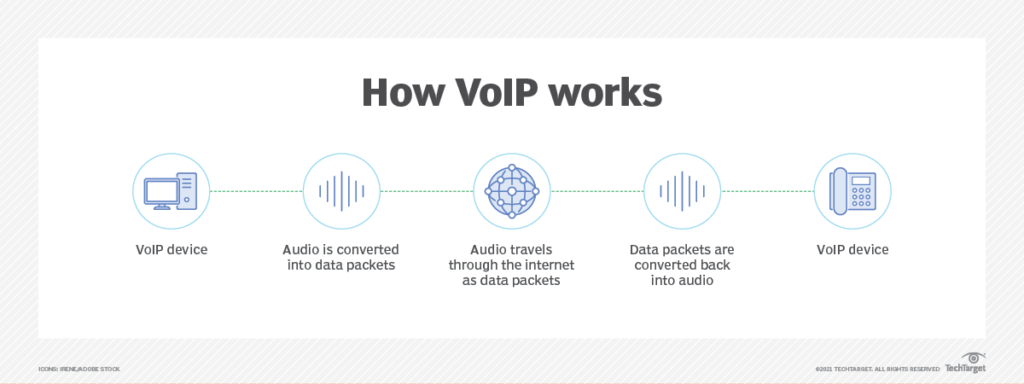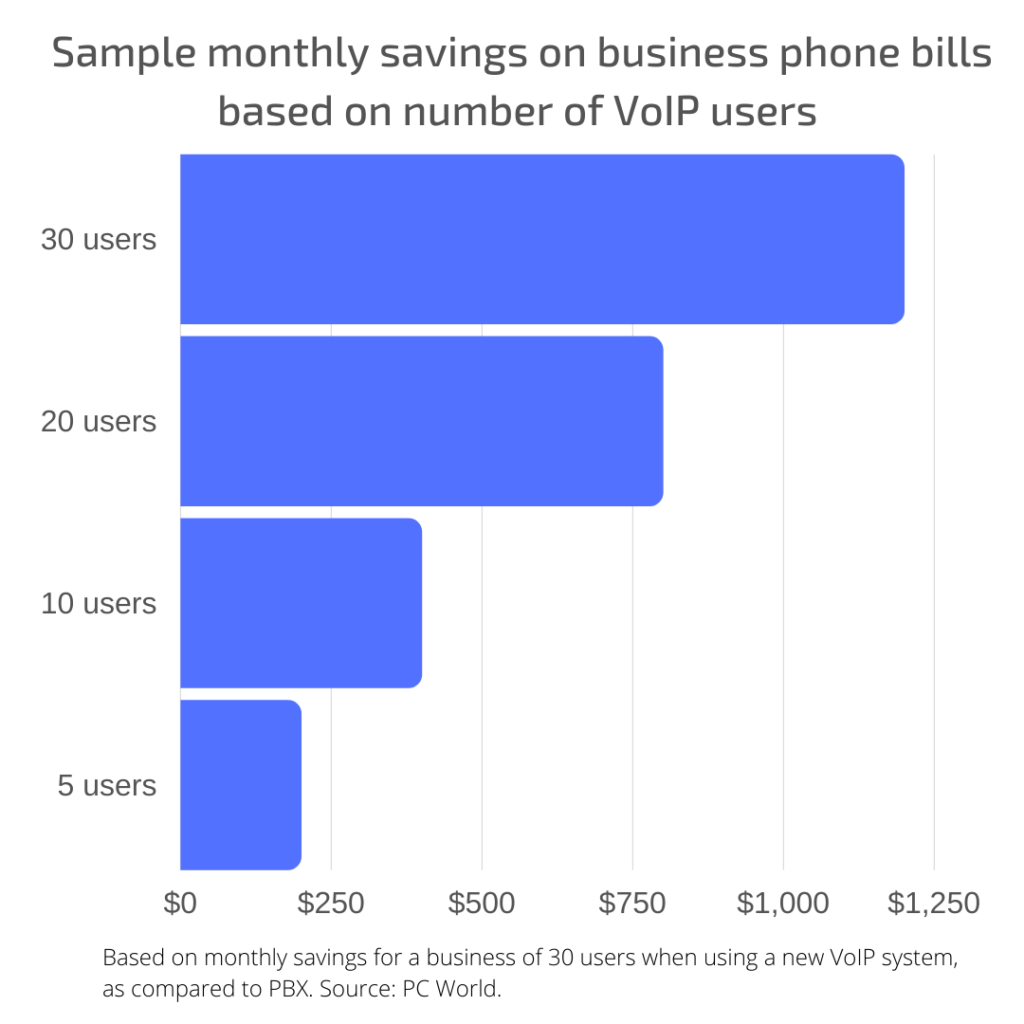‘As a company grows, communication becomes its biggest challenge’ – Ben Horowitz, US entrepreneur and author.
When it comes to investment in growth, a business of any size has to prioritise communications. A small business has the additional challenge of prioritising communications while keeping a close eye on the bottom line. An IP phone system could be the answer. This is why IP use is growing so dramatically in popularity.
A quality communications system can keep internal conduits functioning optimally and can revolutionise operational structure to the benefit of all concerned. Most importantly, it can be responsible for a huge step up in your customer communications.
An IP phone system can deliver a raft of benefits and save your business a whole lot of money and trouble.
What is IP Phone
Phone calls have been possible over the internet for some time. This technology, known as Voice over Internet Protocol, or VoIP, has had quite an effect on the workplace, whether that is primarily office-based, remote, or hybrid.
The handsets that are used with this technology are called VoIP phones, or more often, IP phones. They connect to the internet through an Ethernet cable or, increasingly, WiFi, and look on first inspection pretty much like regular phones. They have features akin to conventional phones, including voicemail, call forwarding and hold music. However, they work very differently.
The basic way they operate is by transforming the analogue output of the user’s voice into a series of digital sequences. These sequences are transferred via the internet and converted back into analogue sounds for the corresponding telephone user to hear.
There are a huge number of suppliers of IP phones, such as Grandstream, Gigaset, Snom, Polycom and Yealink. Which particular supplier to choose is dependent on the specific needs of your organisation, so well worth doing a bit of research first to establish compatibility before you take a leap.
How to Setup IP Phone
1. Wired Ethernet Router
You will need a router of some description. Which sort you opt for will be determined a good deal by budget. A wired ethernet is often preferred as it involves a smaller outlay, but you will be the best judge of what your business requires.
2. IP Phones
There is a good range of IP phone types available. Some will have full-colour lcd touchscreens, some will be cordless, for use with WiFi. The most important thing to make sure of in the first place is that the phones you choose must be compatible with the server you have.
3. VoIP Provider
Assuming you will want to do more than make calls to other people in your office, you are going to need a VoIP provider. This is a service that one subscribes to that makes it possible to connect to others outside the organisation.
Most of these are fairly economical, and you are often permitted to set up an account without charge in order to make sure that your system is working before you sign up to a plan.
4. PBX Server
The PBX (Private Branch Exchange) server is the system’s central processing hub. On to the server will be placed the software that will control the organisation’s telephony.
5. Internet Connection
You can use your existing office internet connection, but, crucially, you will need a sufficient capacity internet connection. The more call volume you are envisaging, the broader the bandwidth, so don’t be tempted to skimp.
Features of IP Phone
- HD Voice Quality

This is what users will notice first: superb HD audio. The improvement in voice quality (whether over handset or speakerphone, particularly using components from quality manufacturers, such as Jabra) with wideband audio compared to most conventional systems is remarkable.
To assist with clarity, there is a sound masking facility offered that does away with extraneous noise. This can be particularly useful when the business is a contact centre, where the volume of other users can be intrusive
- Extension Options
A number of additional
extension options are also available, including automatic call forwarding to the next available extension should the first one be busy.
- One Number
All users can have the same number, if this is desired. The system will display this number regardless of the IP phone used.
Protocols in IP Phone
Session Initiation Protocol (SIP)
This is what signals to the system that a communication session between two or more participants has commenced. It will also establish any alterations to the communication that take place, and will signal when the session is at an end. Text-based (which helps with troubleshooting), it is quite similar to HTTP. SIP accounts are in use by the vast majority of IP phone services.
H.323
Not so widely used as SIP, as it is slightly older, but still fairly widespread. It works in a similar way to SIP, in that it establishes when communication sessions start and finish.
Real-time Transport Protocol
Real-time Transport Protocol (RTP) is responsible for transmitting the media streams. It utilises the even-number ethernet ports.
Real-time Transport Control Protocols
Real-time Transport Control Protocols (RTCP) works in conjunction with RTP. It sends control packets to the call participants. RTCP utilises the next higher odd-number port. Information and statistics are carried by RTCP, such as octet and packet counts. It’s most significant role is to carry Quality of Service (QoS) information, relating to the service that RTP provides.
Secure Real-time Transport Protocol
Secure Real-time Transport Protocol (SRTP) is an extension of RTP intended to provide security features such as encryption and authentication.
Other protocols include SCCP (Cisco Skinny Client Control Protocols) used by Cisco‘s Callmanager and IP phones.
Issues in IP Phone System
1. Power Source

The IP system takes its power supply from the mains socket on the wall, just like most electrical appliances. Obvious, but surprisingly easy to overlook. This being so, you will need to invest in a back-up in case of power outages. It may be worth looking at options such as power over ethernet (poe).
2. Voice Compression
As previously mentioned, the audio quality of VoIP is outstanding. Consequently, if there is an issue with the quality of the voice in evidence then this may well be to do with compression, which is governed by your Codec (coding/decoding) settings. You can try out different codec settings until you have a quality you are happy with.
If no improvement is forthcoming, then it could be to do with your bandwidth. If you are getting a lot of call traffic then it could be that the bandwidth is insufficient for your needs.
3. Internet Service Provider
If you are having issues that you simply cannot remedy at your end, then you will in all probability need to tackle matters from the ISP’s end instead. They may have high latency in your connection, or it could be that they are sending your data across the public not the private network.
Talk to your ISP about any issues they may be facing. Are they experiencing difficulties beyond their control, or could they be doing something about them? It might be time to consider changing ISP altogether. The good news is that there is no shortage of them.
Benefits of an IP Phone System
There are of course multiple communication methods nowadays, and it can be confusing keeping on top of them and managing information across each one. This is where a VoIP Phone System can really deliver.
Once the unifi
1. Unified Communication
ed communication software is installed, staff can communicate via instant messaging, web conferencing, video chat and even good old-fashioned voice over desk phones, all available via one simple-to-use interface.
With the developments over the last few months, staff are becoming more tech-savvy, the usage of Microsoft Teams, Skype etc is now widespread. This places employees at a level of proficiency higher than was the case two years ago.
2. Mobility
Because of cordless phones, especially dect phones, we have become used to a degree of mobility in the workplace. However, using IP phones, businesses bestow hitherto unparalleled freedom on their employees to work in a wider range of locations.
Because staff are not tied to a specific desk business phone, they can be moved around as priorities dictate. This can benefit the staff themselves as well as allowing for the efficiencies provided by
the hot desk office model.
Staff can be moved around the office, around the home, or even around Australia, whatever works best for the organisation. As long as the employee can access the system via their mobile device, they can reap the benefits of VoIP service wherever they happen to be (usually being able to retain one contact number). The productivity advantages here are easy to envisage.
3. Easy-to-use
Most of the features of IP phones are fairly intuitive and most employees will find no difficulty in using them. Moreover, it can be the case that no new hardware is needed, alleviating
training on unfamiliar equipment.
The ‘telephone’ can be downloaded onto a laptop or desktop, and this can then be used as the means of unified communication just like a regular IP phone. This softphone solution makes travelling easier to accomplish too, cutting down on equipment levels.
4. Feature-Rich Communication
IP phones can do so much more than just deliver a regular phone call. They can also facilitate video conferencing, call waiting, auto-attending and unified messaging, as well as transcribing voicemail to email. Buttons are fully programmable, enhancing functionality.
Other benefits of IP phones include call and meeting recording and call forwarding, call analytics, ‘find me’ call routing, anonymous call rejection and caller ID blocking.
5. Easy to Install
IP phone systems do not require any massive restructuring of the office. The installer will simply connect the system to the network via a base station, check for issues and you’re done. You are then free to customise the system to suit your specific needs.
Maintenance is easier than with a traditional copper wire landline system too, and can sometimes be performed remotely.
6. Scalability
With a conventional system, to install a new phone line is a fairly disruptive task. Not so with IP phones. If you have a new position in your business and you need to give them a new phone line, that’s easy to perform with a few clicks, whether you are giving them an extension from your existing number or giving them a new number.
A VoIP system is a terrific adapter and will, through the availability of a series of expansion modules, be able to suit most needs as your business grows.
7. Cost Saving
The savings compared to conventional phone systems are huge, both in terms of installation and subsequent usage
With conventional telephones, if you want to be able to make a call while a member of staff is on the line, a new line would have to be installed (known as a rollover line). By using IP phones, you can do this without the need for an expensive and complicated
installation. Your only limitation is the amount of handsets or headsets you have, and the number of staff you have to hold them.
Additionally, calls are free to other IP phones in the business.
As productivity is facilitated by the unified communication possibilities, cost is reduced relative to output.
Savings can be increased by choosing the right call plan for your business, whether it be an unlimited minutes one or a variety with limited minutes available.
Because of the easy scalability of IP phones, you can start out with a system that is no bigger than it needs to be for your organisation, then upscale very easily as your operation expands. This helps with those all-consuming startup costs.
8. Reliability
IP phone systems tend to be extremely reliable, which is often the main reason behind their purchase.
Wrapping Up
Whatever is in store for your business, it’s clear that IP phones can help you manage it. They deliver heightened levels of performance with reduced levels of expenditure.
Whatever you do, don’t rush headlong into the first system you see. Research the alternatives and see what is the best fit for your business.
After all, ‘preparation is the key to success’. Who imparted this wisdom? Alexander Graham Bell, inventor of the telephone.
Originally published 15 Mar, 2022










